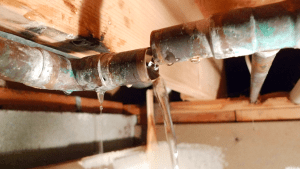Just how to Inspect If Your House Has a Covert Leakage
Just how to Inspect If Your House Has a Covert Leakage
Blog Article
Are you trying to find additional info around Locating water leaks?

Early discovery of leaking water lines can mitigate a potential disaster. Some tiny water leaks may not be noticeable.
1. Examine the Water Meter
Every home has a water meter. Examining it is a proven way that assists you uncover leakages. For beginners, turn off all the water sources. Make certain no one will purge, use the faucet, shower, run the washing machine or dishwasher. From there, go to the meter and watch if it will transform. Given that no one is using it, there should be no motions. If it relocates, that indicates a fast-moving leakage. Also, if you detect no changes, wait a hr or more and also inspect back once again. This suggests you might have a sluggish leak that could also be below ground.
2. Inspect Water Intake
Evaluate your water costs and track your water usage. As the one paying it, you need to observe if there are any type of discrepancies. If you identify sudden changes, despite your usage coinciding, it implies that you have leakages in your plumbing system. Remember, your water expense need to fall under the exact same variety on a monthly basis. A sudden spike in your costs indicates a fast-moving leak.
Meanwhile, a stable rise on a monthly basis, even with the same practices, reveals you have a sluggish leak that's likewise gradually intensifying. Call a plumber to completely inspect your property, especially if you really feel a cozy area on your floor with piping underneath.
3. Do a Food Coloring Test
When it comes to water consumption, 30% comes from toilets. If the shade in some way infiltrates your bowl during that time without flushing, there's a leakage in between the storage tank and also dish.
4. Asses Exterior Lines
Don't fail to remember to check your outside water lines as well. Ought to water permeate out of the connection, you have a loose rubber gasket. One tiny leak can throw away lots of water and also surge your water costs.
5. Examine as well as Analyze the Circumstance
Homeowners ought to make it a behavior to check under the sink counters as well as also inside closets for any bad odor or mold and mildew development. These 2 red flags indicate a leakage so prompt attention is needed. Doing regular evaluations, also bi-annually, can conserve you from a major problem.
A lot more notably, if you recognize your home is already old, maintain a watchful eye on your heating systems, hoses, pipes etc. Look for stainings and compromising as a lot of pipelines and home appliances have a life span. They will certainly additionally normally deteriorate as a result of damage. If you think leaking water lines in your plumbing system, don't wait on it to intensify. Call a specialist plumber immediately so you don't end up with an awful mess in your home.
Early detection of dripping water lines can alleviate a prospective calamity. Some little water leakages may not be visible. Checking it is a surefire way that helps you uncover leaks. One tiny leakage can lose lots of water and also increase your water expense.
If you suspect dripping water lines in your plumbing system, don't wait for it to intensify.
How to Know If Your Home Has a Hidden Leak
Water Meter Reveals Inexplicable Water Usage
If you’d like to test whether or not there’s a leak somewhere in your home, you can do this using your water meter. Here is how to conduct the test:
Don’t use any water in your home for at least 30 minutes; this also means not turning on faucets or water-using appliances.
Go outside, and check your water meter for activity.
If your water meter shows that there was activity, even though no one was using any water, this proves that there is a leak in your home.Visible Mold or Mildew Growth
Leaks behind walls create moist, dark environments that allow mold and mildew to grow and thrive. Eventually, you might see mold growth forming on the wall closest to a hidden leak.
If mold is growing in an area that receives a high amount of moisture, such as a bathroom, it may simply be an indication that better ventilation is needed. However, if you see mold growth on a wall or the ceiling in an area where you would not expect, you probably have a hidden leak.
Musty, Mildew Odor
Sometimes you might not be able to see the mold or mildew that is growing as a result of a leak. However, the smell can give the problem away just as easily. If you catch a whiff of something musty, there’s a good chance that old water is collecting somewhere in your home that you can’t see.
Stained/Warped Walls, Ceilings, or Floors
When your home soaks up water, a variety of red flags can become visible, including ceiling stains, bubbling drywall, warped walls, and sagging floors. While these issues can be caused by excess humidity, they can also be signs that a pipe or plumbing connection has started leaking behind your walls.
Inexplicably High Water Bill
After a while, you get a general sense for what your water bill should be. If you own a pool or sprinkler system, your bill will tend to be higher during summer. However, if you receive a water bill that seems especially high, and you can’t figure out what caused it, then you may have a hidden leak somewhere that’s increasing your bill.
https://www.plumbingjoint.com/blog/2019/july/how-to-know-if-your-home-has-a-hidden-leak/

I found that page on Locating water leaks while perusing the search engines. Sharing is good. You never know, you will be helping someone out. I praise you for your time. Visit us again soon.
Report this page